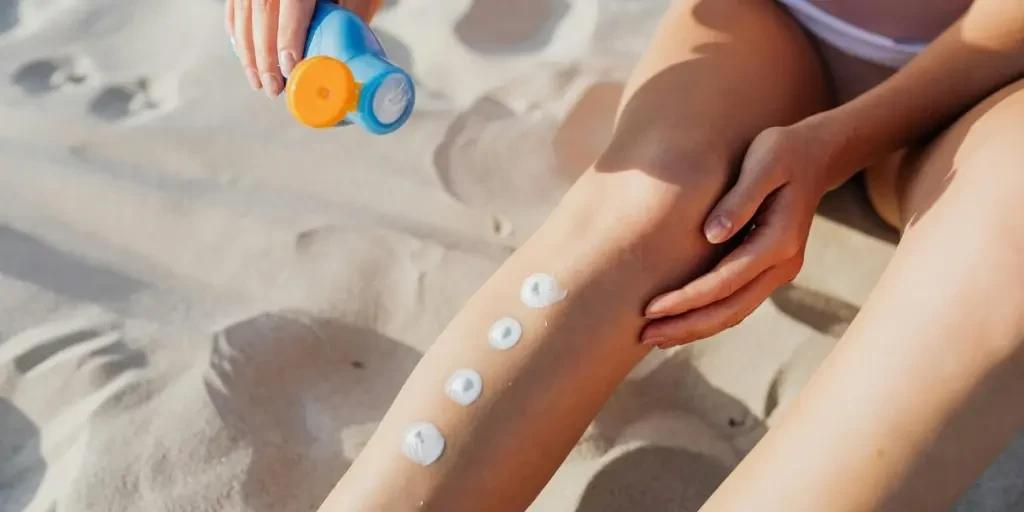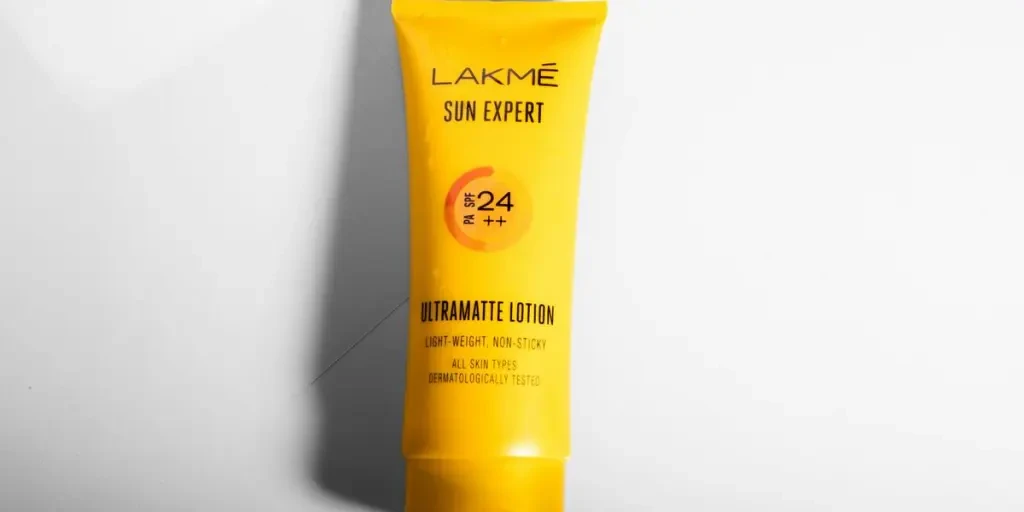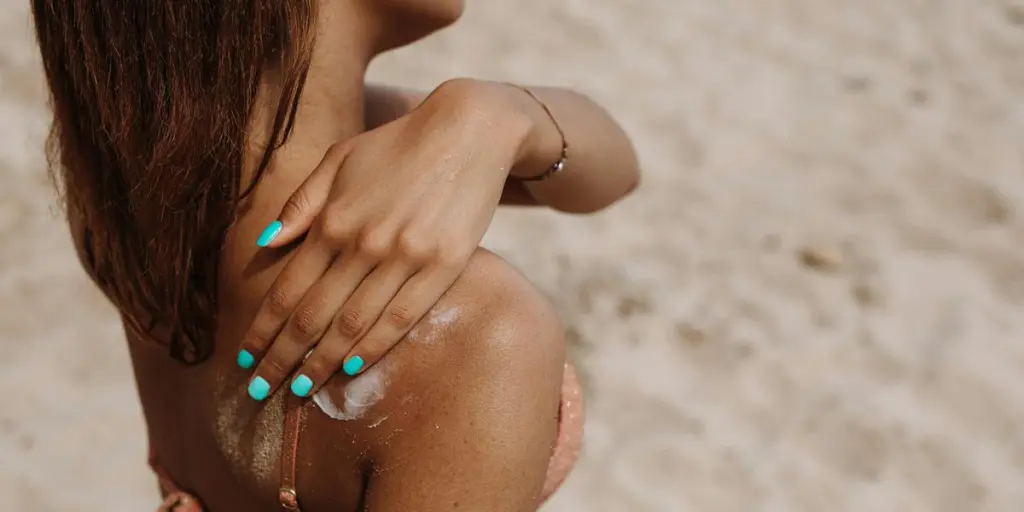As the global focus on health and environmental consciousness intensifies, active sunscreen has emerged as a pivotal product in the beauty and personal care industry. With the market projected to grow significantly, understanding the nuances of active sunscreen and its market potential is crucial for business buyers, including retailers and wholesalers. This guide delves into the essence of active sunscreen, its rising popularity, and the market dynamics shaping its future.
Table of Contents:
– Understanding Active Sunscreen and Its Market Potential
– Exploring Popular Types of Active Sunscreen
– Addressing Common Consumer Pain Points
– Innovations and New Products in the Market
– Wrapping Up: Key Takeaways for Sourcing Active Sunscreen Products
Understanding Active Sunscreen and Its Market Potential

What is Active Sunscreen and Why It’s Gaining Popularity
Active sunscreen, a photoprotective product, shields the skin from harmful ultraviolet (UV) radiation, preventing sunburn, premature aging, and other skin-related issues. Unlike traditional sunscreens, active sunscreens often contain ingredients that not only protect but also nourish the skin, making them a staple in daily skincare routines. The increasing awareness of skin health and the adverse effects of UV exposure have propelled the demand for these products. According to a professional report, the global sunscreen market is expected to grow at a compound annual growth rate (CAGR) of 5.28%, reaching $16.204 billion by 2029 from $11.372 billion in 2022. This growth is driven by the rising prevalence of skin diseases and the growing consumer focus on personal care.
Trending Hashtags and Social Media Buzz
The digital age has amplified the visibility and popularity of active sunscreens through social media platforms. Hashtags such as #SunProtection, #HealthySkin, and #EcoFriendlySunscreen have garnered millions of posts, reflecting the growing consumer interest. Influencers and dermatologists frequently highlight the importance of using active sunscreen, further driving its popularity. The buzz around these products is not just limited to their protective benefits but also their formulation, with a significant emphasis on natural and organic ingredients. This trend aligns with the broader consumer shift towards clean beauty, where products free from harmful chemicals are preferred.
Aligning with Broader Trends: Health and Environmental Consciousness
The surge in demand for active sunscreen is closely tied to broader trends in health and environmental consciousness. Consumers are increasingly aware of the harmful effects of UV radiation, including skin cancer and premature aging. Reports indicate that approximately 9,500 people are diagnosed with skin cancer daily in the United States alone, underscoring the critical need for effective sun protection. Additionally, the trend towards eco-friendly and sustainable products has influenced the sunscreen market. Brands are now focusing on formulations that are not only effective but also environmentally friendly, using biodegradable ingredients and sustainable packaging. This shift is evident in the growing popularity of mineral sunscreens, which use natural UV filters like zinc oxide and titanium dioxide.
In conclusion, the active sunscreen market is poised for substantial growth, driven by increasing consumer awareness and the alignment with broader health and environmental trends. For business buyers, understanding these dynamics is essential to capitalize on the opportunities in this burgeoning market.
Exploring Popular Types of Active Sunscreen

Mineral vs. Chemical Sunscreens: Pros and Cons
When it comes to active sunscreens, the debate between mineral and chemical formulations is ongoing. Mineral sunscreens, also known as physical sunscreens, contain active ingredients like zinc oxide and titanium dioxide. These ingredients sit on the skin’s surface and physically block UV rays. One of the primary advantages of mineral sunscreens is their broad-spectrum protection, which effectively shields against both UVA and UVB rays. Additionally, mineral sunscreens are often recommended for sensitive skin types as they are less likely to cause irritation.
On the other hand, chemical sunscreens contain organic compounds such as oxybenzone, avobenzone, and octinoxate. These ingredients absorb UV radiation and convert it into heat, which is then released from the skin. Chemical sunscreens tend to be more lightweight and easier to apply, making them a popular choice for daily use. However, they can sometimes cause skin irritation and are not always suitable for sensitive skin. Moreover, there are growing concerns about the environmental impact of certain chemical sunscreen ingredients, particularly on coral reefs.
Key Ingredients to Look For
When sourcing active sunscreens, it is crucial to consider the key ingredients that offer effective protection and additional skincare benefits. For mineral sunscreens, zinc oxide and titanium dioxide are the primary active ingredients. Zinc oxide is known for its broad-spectrum protection and anti-inflammatory properties, making it suitable for sensitive and acne-prone skin. Titanium dioxide is also effective in providing UV protection and is often used in combination with zinc oxide to enhance efficacy.
In chemical sunscreens, ingredients like avobenzone, octocrylene, and homosalate are commonly used. Avobenzone provides broad-spectrum protection, while octocrylene helps stabilize other sunscreen ingredients and offers additional UVB protection. Homosalate is another UVB filter that enhances the overall sun protection factor (SPF) of the product. Additionally, many modern sunscreens incorporate antioxidants such as vitamin C and E to combat free radicals and provide anti-aging benefits.
Consumer Feedback and Effectiveness
Consumer feedback plays a significant role in determining the effectiveness and popularity of active sunscreens. Mineral sunscreens are often praised for their gentle formulation and suitability for sensitive skin. However, some consumers report issues with the white cast that these sunscreens can leave on the skin, particularly for those with darker skin tones. Innovations in tinted mineral sunscreens, such as those by brands like Colorescience, have addressed this issue by offering formulations that blend seamlessly into various skin tones.
Chemical sunscreens are generally favored for their lightweight texture and ease of application. Products like Neutrogena’s Sport Face Oil-Free Sunscreen are popular for their non-greasy feel and high SPF protection. However, some consumers express concerns about potential skin irritation and the environmental impact of certain chemical ingredients. Overall, the effectiveness of a sunscreen is often judged by its ability to provide broad-spectrum protection without causing adverse skin reactions.
Addressing Common Consumer Pain Points

Tackling Skin Sensitivity Issues
Skin sensitivity is a common concern among sunscreen users, and addressing this issue is crucial for business buyers sourcing active sunscreens. Mineral sunscreens are typically recommended for sensitive skin due to their non-irritating ingredients. Brands like SkinCeuticals have developed formulations such as the Clear Daily Soothing UV Defense SPF 50, which includes anti-inflammatory ingredients like bisabolol and glycerin to reduce redness and irritation.
For chemical sunscreens, it is essential to look for formulations that are free from common irritants such as fragrances and parabens. Products like the Neutrogena Purescreen+ Invisible Daily Defense Mineral Face Liquid SPF 30 are designed to be gentle on the skin while providing effective sun protection. Additionally, incorporating soothing ingredients like aloe vera and chamomile can help mitigate potential irritation.
Solutions for Long-Lasting Protection
Long-lasting protection is a key factor for consumers, especially those with active lifestyles. Water-resistant formulations are particularly important for activities such as swimming and sports. Shiseido’s Ultimate Sun Protector Spray SPF 40, which features WetForce Technology, is an example of a product that enhances its protective barrier when exposed to water and sweat, ensuring consistent coverage.
Another innovative approach is the use of heat-activated technologies, such as Shiseido’s HeatForce Technology, which strengthens the sunscreen’s effectiveness in response to external heat. These advancements provide reliable protection for extended periods, making them ideal for consumers who spend significant time outdoors.
Overcoming Greasiness and White Cast Problems
Greasiness and white cast are common complaints associated with sunscreen use. To address these issues, many brands have developed lightweight, non-greasy formulations that absorb quickly into the skin. For instance, BIOTHERM’s SUN CARE FACE SPF50+ offers a lightweight texture that leaves no sticky residue, making it suitable for daily wear.
Tinted sunscreens are another solution to the white cast problem. Products like Glow Hub’s Defend Yourself Facial Sunscreen SPF 30 come in multiple shades to match different skin tones, providing a natural finish without the chalky appearance. These innovations cater to consumer preferences for sunscreens that not only protect but also enhance the skin’s appearance.
Innovations and New Products in the Market

Breakthrough Formulations and Technologies
The sunscreen market is continuously evolving with breakthrough formulations and technologies. One notable innovation is the development of multi-functional sunscreens that offer additional skincare benefits. For example, 111SKIN’s Repair Sunscreen SPF 50+ combines sun protection with hydration, anti-aging properties, and blue light defense. This all-in-one approach appeals to consumers looking for comprehensive skincare solutions.
Another advancement is the use of proprietary healing complexes, such as the NAC Y2 complex found in 111SKIN’s products. Originally formulated to support skin repair after trauma, this ingredient provides soothing and restorative benefits, making it a valuable addition to sunscreen formulations.
Eco-Friendly and Sustainable Options
Sustainability is a growing concern among consumers, and the sunscreen industry is responding with eco-friendly and sustainable options. Mineral sunscreens, which use natural ingredients like zinc oxide and titanium dioxide, are often considered more environmentally friendly than chemical sunscreens. Brands like Mama Sol offer 100% mineral moisturizing sunscreens packaged in eco-friendly glass bottles, catering to environmentally conscious consumers.
Additionally, the use of reef-safe ingredients is becoming increasingly important. Sunscreens free from oxybenzone and octinoxate, such as those offered by Shiseido, are designed to minimize harm to marine ecosystems. These sustainable formulations appeal to consumers who prioritize environmental responsibility in their purchasing decisions.
Multifunctional Sunscreens: Combining Skincare Benefits
Multifunctional sunscreens that combine sun protection with skincare benefits are gaining popularity. Products like Murad’s Multi-Vitamin Clear Coat Broad Spectrum SPF 50 offer antioxidant-packed formulations that brighten and nourish the skin while providing UV protection. This trend reflects the growing consumer demand for products that deliver multiple benefits in one application.
Another example is the Savor Beauty Radiance Sun Milk SPF 50+, which incorporates clean actives like hyaluronic acid and niacinamide to hydrate and protect the skin. These multifunctional products simplify skincare routines and provide added value, making them attractive options for business buyers looking to meet diverse consumer needs.
Wrapping Up: Key Takeaways for Sourcing Active Sunscreen Products

In conclusion, the active sunscreen market is characterized by a diverse range of formulations and innovations designed to meet various consumer needs. Business buyers should consider factors such as ingredient safety, skin sensitivity, long-lasting protection, and environmental impact when sourcing products. By staying informed about the latest trends and advancements, buyers can select sunscreens that offer effective protection and additional skincare benefits, ensuring consumer satisfaction and loyalty.





 Afrikaans
Afrikaans አማርኛ
አማርኛ العربية
العربية বাংলা
বাংলা Nederlands
Nederlands English
English Français
Français Deutsch
Deutsch हिन्दी
हिन्दी Bahasa Indonesia
Bahasa Indonesia Italiano
Italiano 日本語
日本語 한국어
한국어 Bahasa Melayu
Bahasa Melayu മലയാളം
മലയാളം پښتو
پښتو فارسی
فارسی Polski
Polski Português
Português Русский
Русский Español
Español Kiswahili
Kiswahili ไทย
ไทย Türkçe
Türkçe اردو
اردو Tiếng Việt
Tiếng Việt isiXhosa
isiXhosa Zulu
Zulu